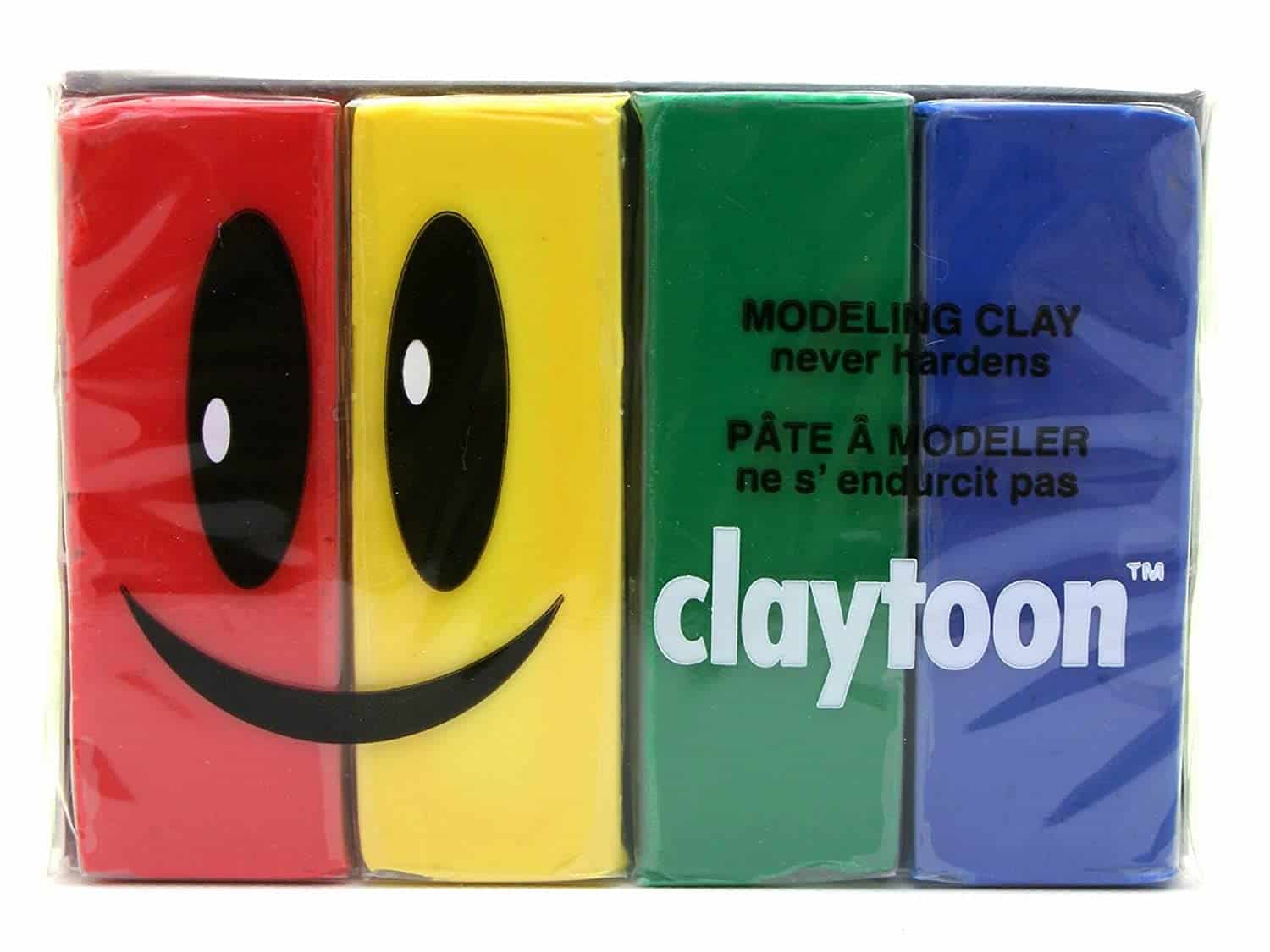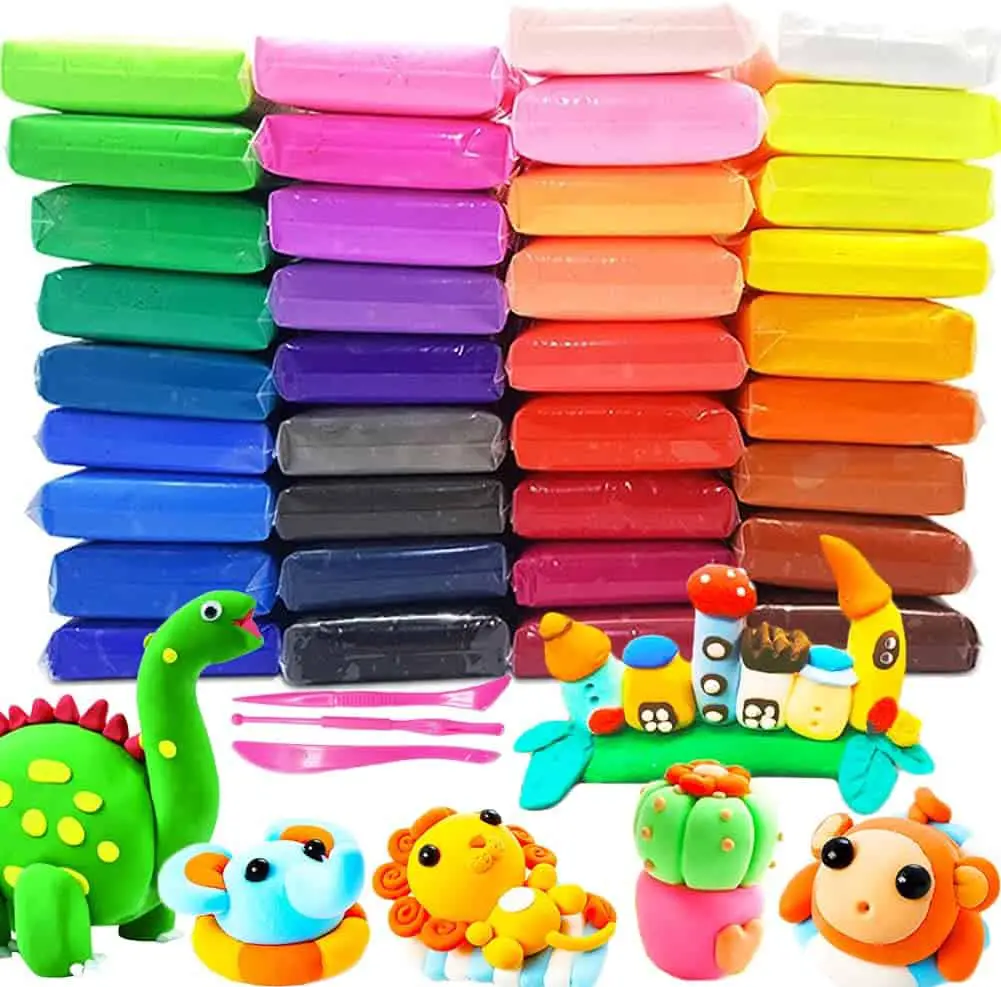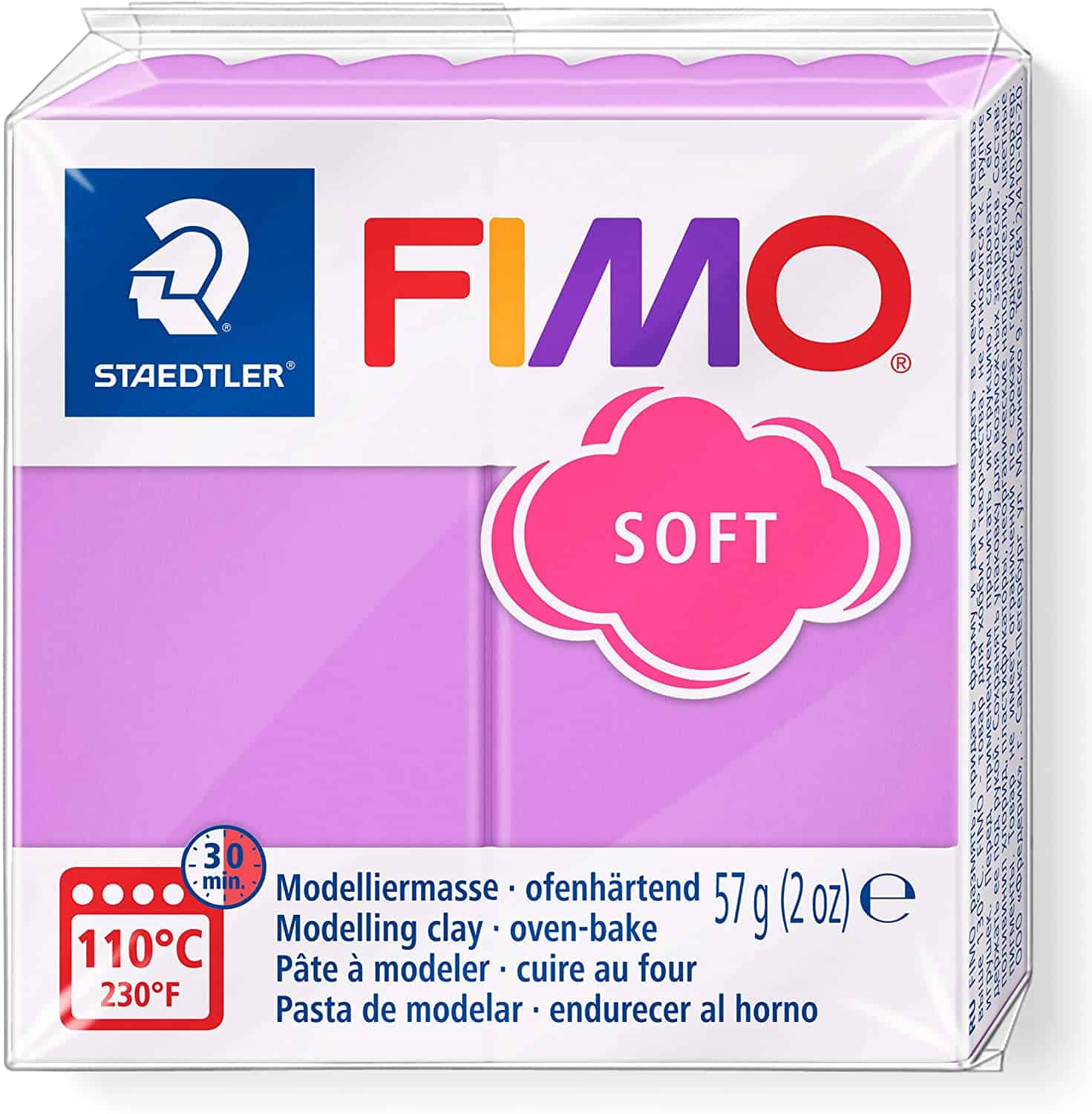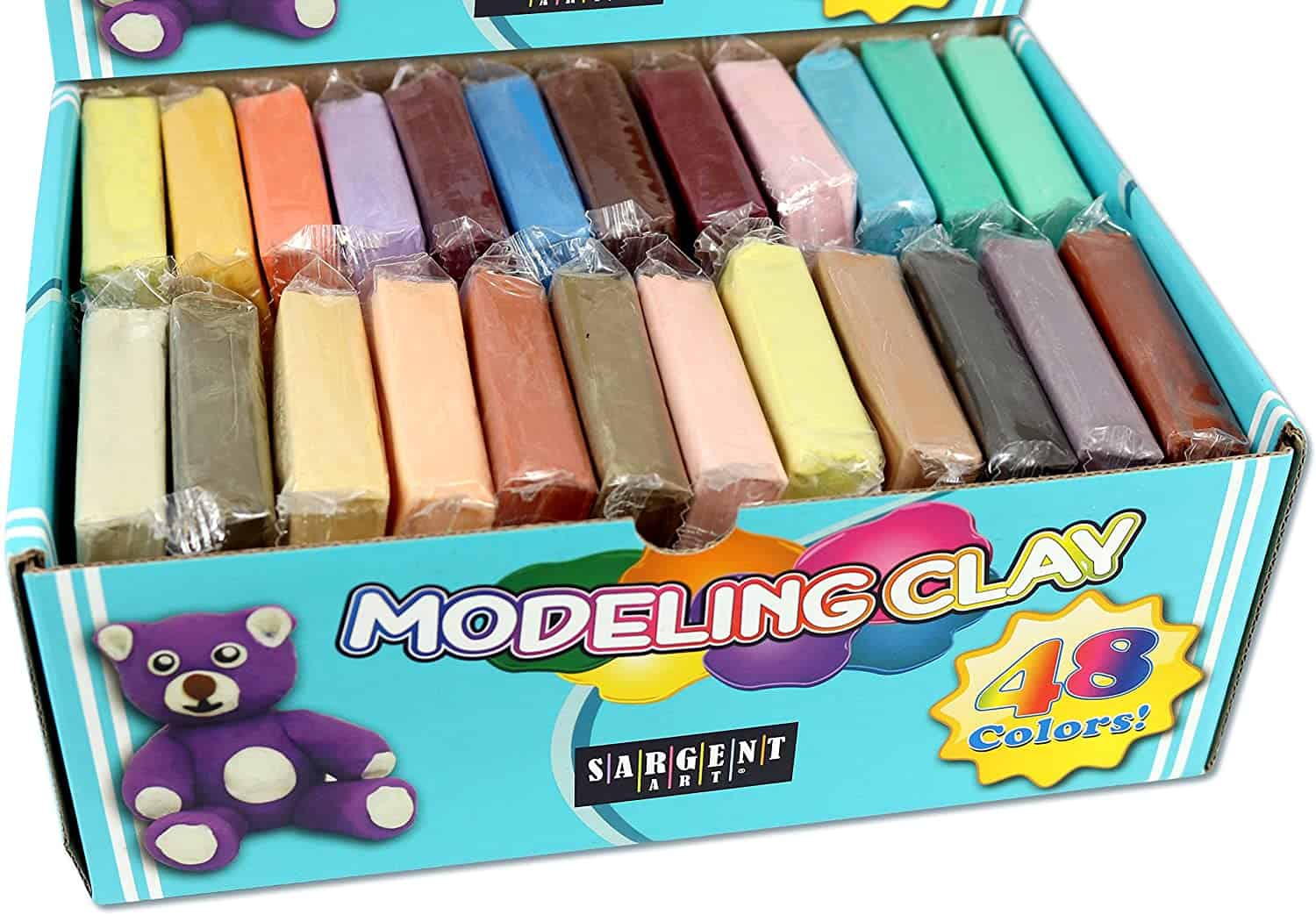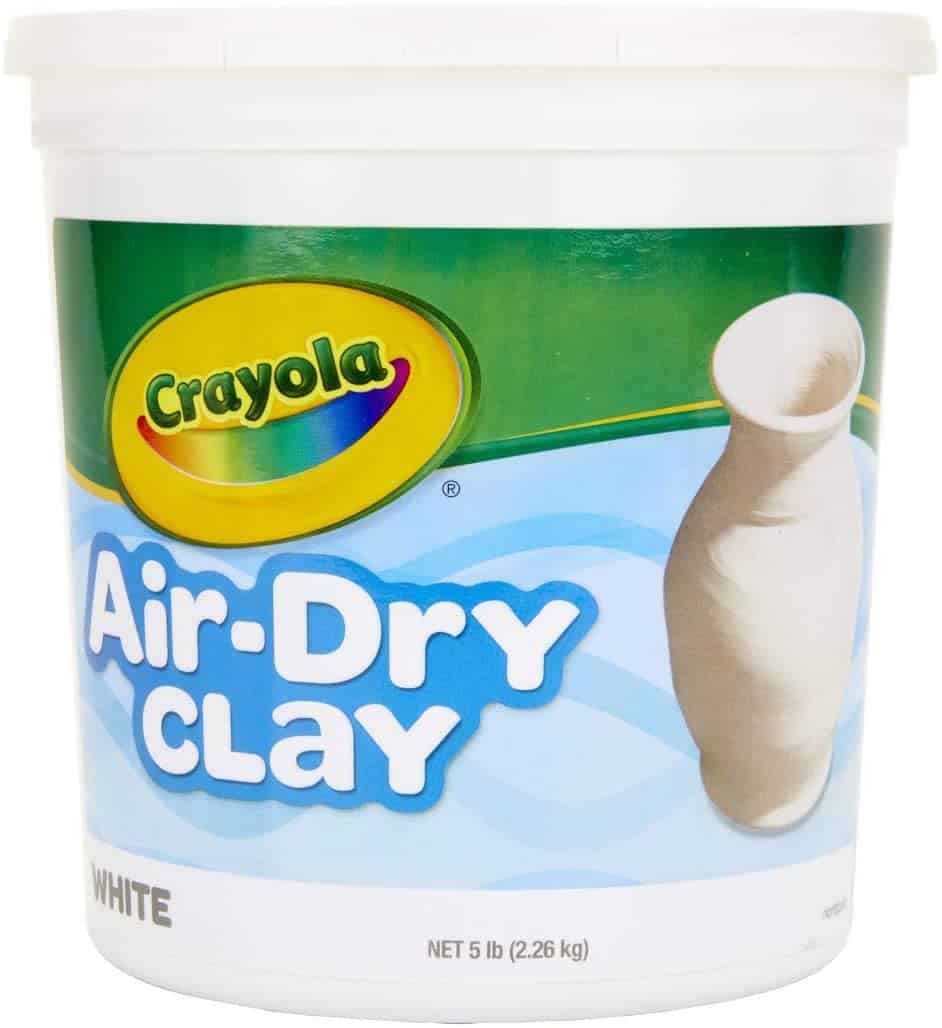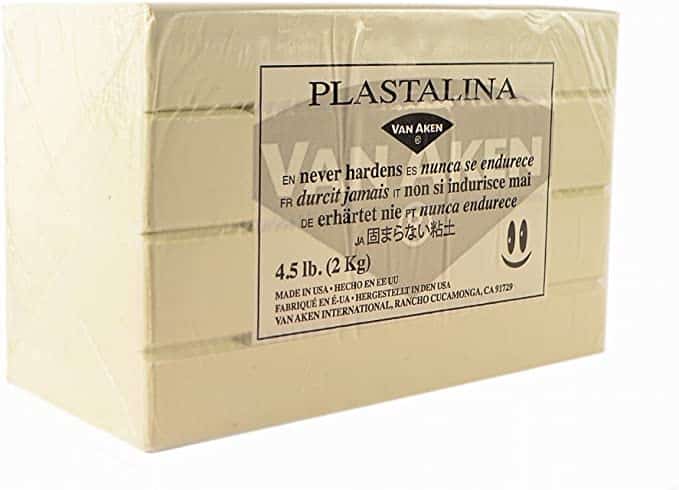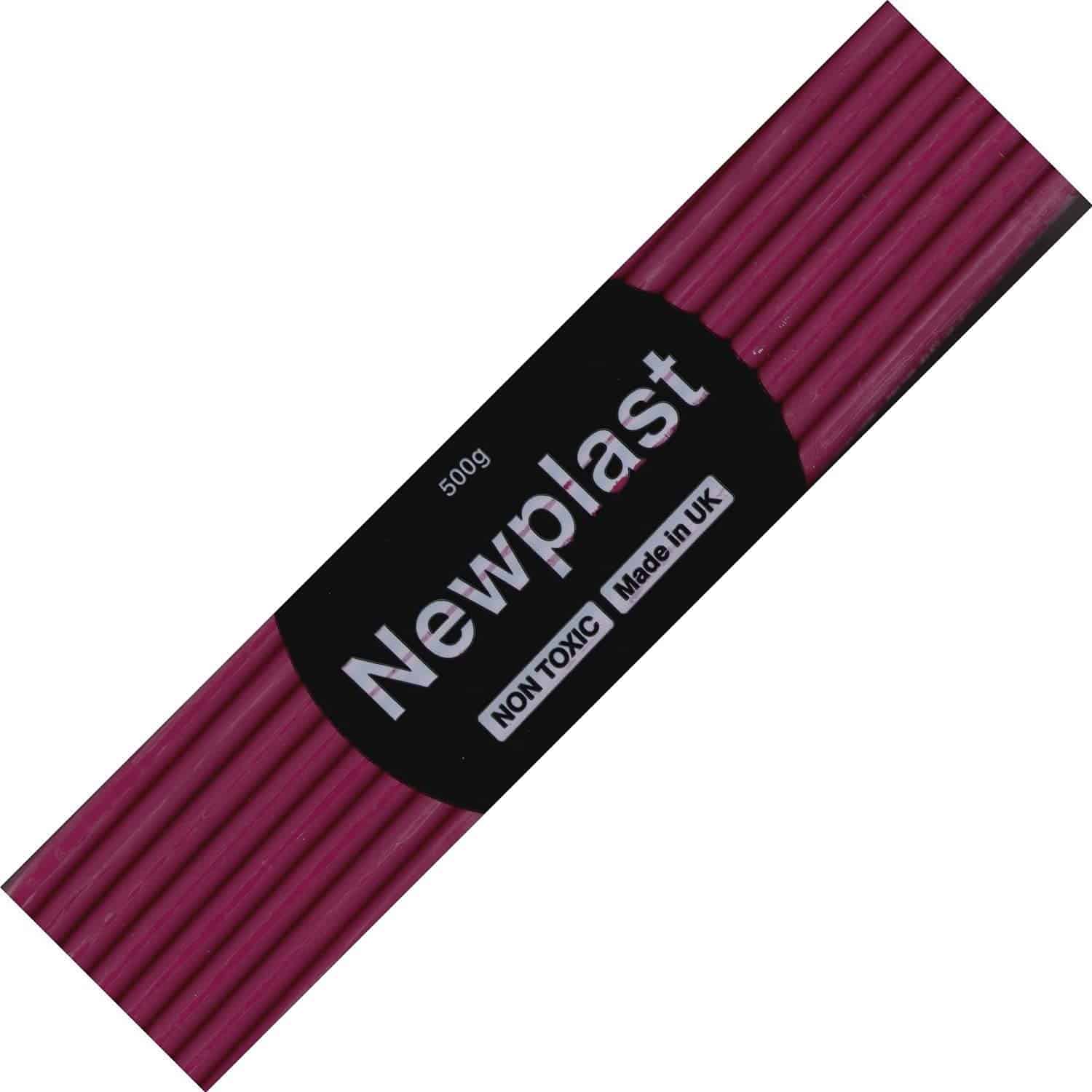Best clay for stop motion | Top 7 for claymation characters
You can make stop motion animation using all types of figurines and puppets but clay puppets are still very popular.
Claymation requires making clay animation characters and for that, you need the best clay for your puppets.
Are you wondering about the best clay to use?
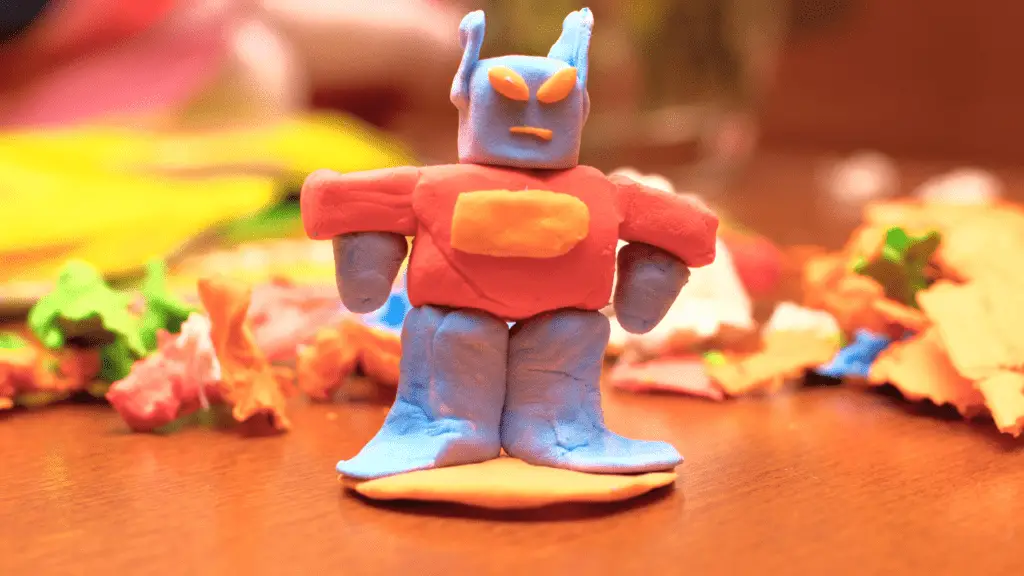
Your clay models can be made of hardened clay, air-dry clay, or simple plasticine that any beginner or child can use.
The best clay to use for stop motion is Claytoon oil-based clay because it’s easy to shape and sculpt, air-dries, and doesn’t require baking. Therefore, animators of all skill levels can use it.
In this guide, I’m sharing the best types of clay for stop motion animation and reviewing each so you know which type to pick up for your project.
Best overall & best oil based clay for claymation
Oil based clay that is very easy to sculpt. Vibrant colors that stay well and are easy to mix.
Best budget clay for claymation
The plasticine is extremely stretchy and it is non-stick. The set comes with some handy sculpting tools and is very affordable. Perfect set for kids to start with stop motion
Getting started with your own stop motion storyboards
Subscribe to our newsletter and get your free download with three storyboards. Get started with bringing your stories alive!
We'll only use your email address for our newsletter and respect your privacy
Best polymer & best oven-bake clay for claymation
Polymer clay with a relative short baking time. It is a soft polymer clay that is easily worked and very strong after baking.
Best for beginners clay for claymation
This plastalina clay is semi-firm but not as soft as the cheaper plasticine. It’s a bit harder to mold but then the figures hold their shape better. This clay is easier to work with than the polymer clay of Sargent art and doesn’t require baking.
Best air-dry clay for claymation
Natural earth clay with a long drying time. The end result are clay figurines that turn out very hard and durable.
Best re-usable and non-hardening clay for claymation
This non-hardening plastalina is oil based, making the clay is soft and easy to work with. It doesn’t dry out, making it quite economical. A good quality product, used for professional productions.
Best clay for claymation professionals
Used by the animators at Aardman Studios making this the clay for professionals. Newplast is a non-drying, modelling oil based clay and can be re-used many times over. It is pliable and strong enough to retain its shape.
In this post we'll cover:
- 1 Buying guide: what to know when buying clay for claymation
- 2 Drying time & baking time
- 3 Best clay for stop motion animation reviewed
- 3.1 Claytoon 228051 Oil Based Modeling Clay Set
- 3.2 Eerrhhaq 36 Colors Air Dry Plasticine Kit
- 3.3 Staedtler FIMO Soft Polymer Clay
- 3.4 Sargent Art Modeling Clay
- 3.5 Crayola Air Dry Clay Natural White
- 3.6 Best air-dry clay for claymation: Crayola Air Dry Clay Natural White
- 3.7 Van Aken Plastalina
- 3.8 Newplast Plasticine
- 4 How to store your clay characters
- 5 FAQs
- 6 Takeaway
Buying guide: what to know when buying clay for claymation
In the buying guide, I am focusing on the different clay types you can use for stop motion.
There are several types of stop motion clay varieties you can use to make your characters. Depending on your project requirements and preferences, you can choose from:
Polymer clay
Also known as oven-bake clay, this is a type of modeling clay that hardens when baked in an oven.
It is available in various colors and is often used to make small items like beads and jewelry.
Polymer clay is most commonly used by most professional animation studios because once baked, the clay characters become very strong and durable.
The main use for baking clay is to make the non-moveable parts of the clay puppet.
Things like clothing, accessories, or body parts you don’t want to make can be baked and added on securely.
Some animators build a limbless puppet body around the armature and then bake it. Once it’s dry they can paint and add other moveable and moldable body parts.
Pros
- It is strong and durable
- The colors don’t run or bleed
Cons
- It can be pricey
- You need an oven to bake it
Oil-based clay
Many professional stop motion animation studios use oil-based clay because it’s easy to sculpt. It doesn’t require baking and can be stored for long periods of time.
Oil-based clay is made from a combination of petroleum and wax, which makes it less durable than polymer clay. It can also leave residue on your hands and clothing.
Pros
- Available in a wide range of colors
- Easy to sculpt
- Does not require baking
Cons
- Less durable than polymer clay
- Can leave residue on hands and clothing
Water-based clay
If you’re looking for a non-toxic option, water-based clay is a good choice. It’s easy to clean up and doesn’t require baking.
Water-based clay is made from a combination of water and clay powder. It can be difficult to work with because it dries out quickly.
But, you can add a bit of water while molding the puppets, and then it’s an easier task.
Pros
- Easy to work with
- Non-toxic
- Can be stored for long periods of time
Cons
- Less durable than polymer clay
- Can leave residue on your hands and clothing
Air-dry clay
This is a type of modeling clay that dries on its own without being baked in an oven.
It is available in various colors but it is often used to make larger items like vases and bowls. Air-dry clay is not as strong or durable as polymer clay but it is much easier to work with.
This type of clay is often recommended for beginners over polymer clays.
Pros
- No need to bake
- Easy to find
- Easy to work with
- Stay soft for a while
Cons
- Not as strong or durable
- Can be difficult to find in certain colors
Plasticine
This is a non-drying modeling clay that’s very popular among stop motion animators. It doesn’t harden so you can easily reshape it and reuse it for your next project.
Soft plasticine clay (also known as plastalina clay) is easy to work with, especially for kids because it doesn’t require baking.
You can find all of these clay varieties at your local craft store or online.
However, plasticine is quite sticky and messy to work with but since it’s so easily malleable, you just can’t go wrong.
Pros
- It’s very easy to use and manipulate.
- You can reuse it multiple times.
Cons
- Your characters might not be as durable as those made with other types of clay.
- It can be a bit sticky.
Drying time & baking time
When working with any type of clay or plasticine, the drying time is important. You want to have enough time to shape and mold your puppets.
Some types of materials like air-dry clay or plasticine don’t need to be baked so you can make the clay characters and start shooting your images immediately.
If you’re making non-moveable parts you should bake them to prevent them from moving while shooting your images.
When working with oven-bake clay, you need to be very careful not to over-bake your characters. Baking times will vary depending on the brand and type of clay you’re using.
Any ceramic clay should be baked at a low temperature, around 265 degrees Fahrenheit.
Do a test bake with a small piece of your clay to see how long it takes to harden.
As a general rule, bake polymer clay characters for 30 minutes per 1/4-inch (6mm) thickness at 265 degrees Fahrenheit (130 degrees Celsius).
If your character is thicker than 1/4 inch, you will need to bake it for longer. For thin characters, bake for less time.
Do a test before you bake your final character to make sure you don’t over-bake it.
When working with oil-based clay, there is no need to bake the characters.
The clay will harden on its own after some time so be mindful of how long you are shooting your images for.
Find out what other types of stop motion there are (we count at least 7!)
Best clay for stop motion animation reviewed
Keeping all that in mind, let’s dive into the review of different clays you can use for claymation.
Claytoon 228051 Oil Based Modeling Clay Set
- The clay is oil based making it easy to sculpt and great for beginners and children
- Colors are easy to mix
- Disadvantage is that it transfers colors to you hand
- Type: oil-based clay
- Requires baking: no
- Drying time: air dries & doesn’t harden
If you’ve decided to skip Lego figures or other puppets and want traditional clay characters for your stop motion film, the Van Aken Claytoon oil-based clay is easiest to work with and most convenient.
Not only is this type of colorful clay very affordable, but it doesn’t need to be baked, it air-dries slowly and won’t dry out or crumble.
So, you can make your puppets as slowly as you like without worrying about hardened clay bits.
You can leave the puppets out at air or room temperatures for weeks and they won’t lose their shape or get deformed.
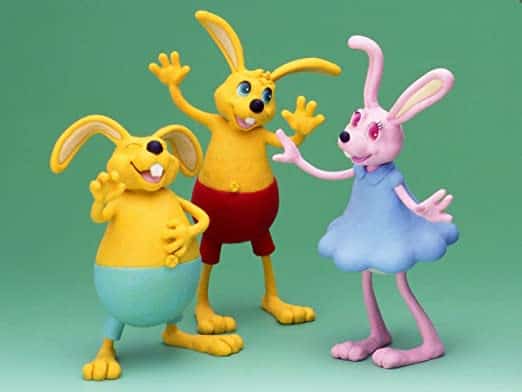
The advantage of oil-based plastalina clays like Claytoon is that they won’t stick to your hands, tools, or surfaces as much as other types of clay.
Also, this clay is perfect for clay animation because it is highly malleable and easy to form and sculpt. The clay is very soft and even kids with small hands can work with it.
Once modeled, the clay stays upright and doesn’t topple over.
This is very important when designing you characters because then you can take the photos and frames without having to keep making adjustments to the clay figure.
You can even mix the Claytoon with other colors and they don’t go muddy.
If you want to create more custom colors, you can mix Claytoon with Super Sculpey non-colored clay. This reduces color transfer and works best for making unique colors.
Thus, if you’re looking to color blend, this clay is the best for the job.
The main disadvantage of this product is that it transfers color to your hands and clothes easily.
If you don’t want your hands or work area to get messy, make sure to wear gloves when working with this clay.
Also, it’s not as sturdy as polymer clay for block-style characters. However, it’s easy to mold to your wire armature.
This Claytoon is non-toxic and has very little scent so it’s safe to use for all ages.
Eerrhhaq 36 Colors Air Dry Plasticine Kit
- Ultra-light plasticine is stretchy and suited for simple characters
- The set comes with some handy sculpting tools and is very affordable. Perfect set for kids to start with stop motion
- Suited for simple shapes. If you want to make more advanced characters, it’s best to stick to oil-based or polymer clays.
- It dries out over time, but not as durable as polymer clay
- Type: plasticine
- Requires baking: no
- Drying time: 24 hours
If you want cheap clay for making simpler or more rudimentary clay characters, I recommend an affordable plasticine kit with 36 colors.
This plasticine is super soft and easy to mold and easy to work with for all ages. It doesn’t need to be baked and will air-dry slowly over 24 hours.
After it dries, the clay becomes hard although it’s still fragile so I would avoid touching it too much.
But, 24 hours is still plenty of time to shape and mold your characters.
The plasticine is extremely stretchy and it is non-stick so it won’t stick to your hands or clothing.
Plus, it doesn’t transfer the color to your skin which is usually a problem with modeling clay.
The only issue is that the clay is packaged in thin plastic which sticks to it and you have to buy a plastic container for storage or else the plasticine will get hard.
The biggest advantage of this product is that it’s very affordable compared to other types of clay.
A single 2 oz block of plasticine clay costs less than $1. Here, you get all kinds of colors, including neons and pastels so you can make very unique figures for your stop motion movie.
Combined with a camera and stop motion software, you have a great claymation starter kit here.
This kit also comes with some handy sculpting tools to help you give your characters a personality.
Overall, if you have small kids and want them to be able to mix and stretch all the colorful plasticine for stop motion, this is a good value kit.
If you’re a pro, it’s best to stick to oil-based or polymer clays.
Best overall Van Aken Claytoon vs Budget Plasticine
If you want the best stop motion clay for detailed work and color blending, go with Van Aken Claytoon.
The oil-based clay is very easy to work with, non-sticky, and perfect for creating custom colors.
However, it’s not as simple to work with as plasticine and it stains your hands and clothes easily.
For a cheap alternative that’s still fun to work with and doesn’t require baking, get the 36-color plasticine kit.
The clay is soft, non-toxic, and won’t stick to your skin but it doesn’t harden and hold its shape as well.
Both of these clays are great for stop motion, it just depends on your level of expertise and what you’re looking to create.
Pricewise, the Claytoon is pricier but better quality whereas the cheap 36 color plasticine kit is more for amateur animations.
Did you know that claymation is a type of stop motion, but not all stop motion is claymation?
Staedtler FIMO Soft Polymer Clay
- Polymer clay with a relative short baking time
- Very soft clay making it easy to work with
- Because the clay is quite soft, creating fine details can be difficult
- Type: polymer
- Requires baking: yes
- Baking time: 30 mins @ 230 F
The Fimo polymer clay is one of the top stop motion animation clays because it is soft and easy to work with.
It comes in a variety of colors, so you can create any type of character or scene that you want.
The clay needs to be baked in order to harden, so make sure you follow the instructions on the package. You must bake the clay figures for 30 minutes at 230 F or 110 C.
This type of clay is mostly used to make the non-moveable parts like accessories, body parts you want to stay fixed, clothes, and other details.
If you bake these parts they are going to stay fixed while you take the photos.
This clay has quite a short baking time so making your characters won’t take forever.
One advantage of Fimo is that it doesn’t produce any toxic fumes when baking, so it’s safe to use even if you have kids around.
The clay is also non-sticky so it won’t stick to your hands or surfaces. Also, this clay doesn’t transfer color so you don’t have to worry about staining your clothes or work area.
Once baked, the clay becomes hard and durable so your characters won’t break easily.
The advantage is that this is a soft polymer and compared to other brands like Sargent Art which make very hard, firm polymers, this FIMO is a dream to work with, especially if you are just starting out with claymation.
However, if you want to add more detail to your designs, this clay may be a bit too soft to work with.
So if you’re looking for a polymer clay that is more firm, for that extra detail and control, you can also check out the professional variant of Staedtler FIMO. This type of clay is best for those who are familiar with making claymation and harder to use for beginners.
Sargent Art Modeling Clay
- This semi firm plastalina is not as soft as the cheaper plasticine, but holds it shape very well
- Comes in a wide array of colors and is ideal as a starter set for kids
- This is plastalina clay is not as durable as other clays in this post. If you are looking for more fine details to sculpt, check out the professional variants of Sargent Art
- Type: plastalina modeling clay
- Requires baking: no
- Drying time: slow drying
This Sargent Art plastalina modeling clay is the easiest to use and doesn’t require any baking.
It’s perfect for kids or beginners who want to try their hand at clay animation. The plastilina is soft and easy to mold so you can create any type of character that you want.
The clay comes in 48 different colors so you have a wide range to choose from. You can mix and match the colors to create new shades.
This modeling clay is semi-firm but not as soft as the cheaper plasticine. It’s a bit harder to mold but then the figures hold their shape better.
The clay is non-toxic and safe for kids to use. The clay dries fast but it doesn’t harden so your characters will be flexible.
This is an advantage if you want to make jointed characters because you don’t have to worry about the clay breaking.
Also, you can use this clay with molds!
However, the downside is that if you want your characters to be permanent, they won’t last more than a few weeks like polymer clay.
Overall, this is the best clay for stop motion animation for beginners. It’s easy to use and doesn’t require any baking.
That’s why many classrooms are using this Sargent Art brand clay to teach kids about stop motion animation.
The clay is easy to clean off with a bit of water and won’t stain the hands.
If you want to try your hand at clay animation, this is what to start off with if you want good value for your buck.
Fimo polymer clay vs Sargent Art Plastilina for beginners
First of all, the FIMO polymer clay is a baking clay while the Sargent Art Plastilina is not.
So, if you’re a beginner, we recommend the Sargeant Art plastilina because it’s much easier to use. You don’t have to bake the clay which is a hassle, and the figures will be more flexible.
FIMO soft polymer is also easy to work with, especially if you are just starting out with claymation.
However, if you want to add more detail to your designs, this clay may be a bit too soft to work with.
The advantage of the Fimo polymer clay is that the baked figurines or body parts will last longer and there’s less chance of breaking.
In the end are both very good options, with each their own use.
Sargent Art clay is very good for using the movable parts as the clay is strong enough to hold.
Fimo Soft polymer is good for creating strong and durable fixed elements to your background or characters.
Also find out what are the best materials for claymation armatures and how to use them
Crayola Air Dry Clay Natural White
- Natural earth clay with a long drying time. The end result are clay figurines that turn out very hard and durable.
- You don’t have to use an oven, so it’s easy to get started with
- Comes in only one color, so you’ll have to color it yourself
- It does take a few days to fully harden. For quicker result you might want to consider oven baked clay
Best air-dry clay for claymation: Crayola Air Dry Clay Natural White
- Type: air dry natural earth clay
- Requires baking: no
- Drying time: 2-3 days
Crayola Air Dry Clay is one of the best stop motion animation clays because it has a long drying time.
This means you can mold and make adjustments easily while shooting your stop motion movie over the course of a couple of days.
It comes in a 5 lb tub that you can seal to keep the clay fresh. The clay is white but you can paint it any color that you want.
The advantage of this air-dry clay is that it hardens slowly and is super malleable.
However, it takes about 2-3 days for the clay to harden completely which is quite a long time if you want to make parts that don’t move.
The disadvantage is that once it hardens, it’s difficult to make changes.
Also, the fact that you have to color and paint the clay is quite an inconvenience.
There are other brands of air-dry clay that come in different colors. But overall, this Crayola brand is one of the cheapest and best because the clay is easy to bend and sculpt.
When you want to connect joints and pieces, all you have to do is add a bit of water and you’re done.
The secret to working with this product is to keep it moist – you’ll be amazed at how easy it is to shape and mold.
The resulting clay figurines turn out hard and quite strong so they’re not easily prone to cracks and breaks. In fact, compared to cheaper air-dry clays, this one is not brittle or fragile at all.
This Crayola product is often compared to the Gudicci Italian modeling clay or DAS but that one is pricier and doesn’t come with a resealable bucket container.
When using Crayola air-dry clay, It’s important to seal the bucket as soon as you remove a piece of clay, or else the clay can dry out very fast.
Van Aken Plastalina
- The clay is soft and doesn’t dry out, making it quite economical
- This non-hardening oil based plastalina. It doesn’t stain and has a smooth consistency and texture
- It’s one of the more pricier clays on this list
- As with all plastalina clays, you’ll have to kneed it first, so for small children this might be a bit difficult
- Type: non-hardening plastalina
- Requires baking: no
- Drying time: does not dry & harden
If you’re very busy making many claymation characters, you probably want a non-drying and non-hardening clay like the Van Aken plastalina block.
This 4.5 lb clay block is soft, easy to use, and never dries out. You can keep it in an airtight container and keep re-molding it as needed.
The good thing is you can re-use it over and over again so it’s quite economical.
This modeling clay is amazing because of its smooth consistency and texture – it’s even been used to create puppets by well-known studios.
It’s similar to the re-usable Newplast they used for Wallace and Gromit.
Although you’d expect this clay to be very firm, it’s surprisingly malleable and easy to shape.
However, as is the case with plastalina in general, you’ll need to do a bit of kneading and stretching of the clay first.
This clay has a plain yellowish-cream color and it definitely needs coloring if you want to make fun, pretty figurines.
The only problem is that it can get a bit pricey if you need a lot of clay.
But overall, it’s still one of the best stop motion animation clay because it’s so easy to work with and it never dries out.
Crayola air-dry clay vs Van Aken non-hardening clay
So which is better – the Crayola air-dry clay or the Van Aken non-hardening clay?
It really depends on what you need.
If you want a clay that stays soft for a couple of days, then the Crayola air-dry clay is a good choice.
It’s also very cheap and you don’t need to bake it.
However, it takes a long time to dry (2-3 days) and that’s inconvenient if you want non-moveable parts and limbs.
Also, you need to color and paint the clay which can be quite a hassle.
If you want a clay that you can re-use over and over again and that never dries out, then the Van Aken non-hardening clay is a better choice.
It’s best if you do a lot of stop motion animation because you can just keep re-using the clay.
It’s also very smooth and easy to work with.
Newplast Plasticine
- A non-drying, modelling oil based clay and can be re-used many times over. It is pliable and strong enough to retain its shape.
- Pricier compared to other clays. Not as widely available as other clays
- As with all plastalina clays, you’ll have to kneed it first, so for small children this might be a bit difficult
- Type: plasticine
- Requires baking: no
- Drying time: non-hardening
If you’re a professional animator, wanting to make clay characters like the animators at Aardman Studios in productions such as Wallace and Gromit, then you need to get your hands on Newplast modeling clay.
This is non-hardening oil-based plasticine you can re-use many times over. It doesn’t get hard or dry and remains pliable.
Newplast does not require baking and yet still, your clay puppets will keep their form quite well.
So if you make a mistake, you can just squish it back into shape and start again.
That’s probably why Aardman studio likes this material so much – it’s reusable and malleable.
You can keep it in an airtight container and it will never dry out. You can even add water, canola oil, or a bit of Vaseline to it if it starts to get hard.
Here’s an animator making claymation characters using Newplast:
One of the reasons why this plasticine is best for pros or experienced animators is that you need to be able to manipulate and work it quite a bit to get it to start molding.
So if you’re a beginner, this might be quite frustrating for you.
It’s also quite pricey compared to other modeling clay but worth it because the end results are superior and the figures hold their shape really well.
This plasticine should be used at room temperature only or else it can become a bit firm when exposed to cooler temperatures.
Newplast is smooth, soft, and easy to work with. It doesn’t need any preparation like other plastilina and it doesn’t leave any residue or color transfer.
That’s part of the reason why pro animators prefer this material.
It comes in a wide range of colors and it can be mixed to create new colors.
How to store your clay characters
Once your clay character, limb, or accessory is dry or baked, you need to store it properly to keep it from breaking.
For oven-bake clay characters, wrap each one individually in plastic wrap and store them in an airtight container.
You can store air-dry clay and plasticine characters in a sealed bag or container.
To avoid your characters from drying out, add a small amount of water to the storage container. This will keep the clay pliable and easy to work with.
Be sure to label each character so you know which one is which.
FAQs
Can you use air-dry clay for stop motion?
Yes, you can use air-dry clay for stop motion and it’s a good clay because it stays soft and moldable for up to 3 days.
You need to color and paint the clay, which can be quite a hassle.
However, it’s very easy to work with and if you’re not in a rush, it’s a cheap way to build your puppets.
Which clay sticks to armature?
Any type of oven-bake clay will stick to an armature. The other clays work too, but polymer clay will really stick to the wire armature and stay put.
These hardening clays are good for building more detailed character details and parts since you can add a lot of small features without worrying about the clay falling off.
Therefore, you can make high-quality and long-lasting puppets.
Plastilina clay is also good for this task. It easily sticks to the armature and you can mold it very well.
Can I use playdough for stop motion?
Yes, but playdough is not the best clay to use.
It can be too soft and the colors may bleed into each other.
Also, it’s not easy to add small details with playdough. But, this material is easily pliable and is great for making prototypes.
However, if you’re just starting out and want to experiment with stop motion, playdough is a good cheap option.
Non-hardening plasticine is also a good option.
What clay is used for Wallace and Gromit?
To make these animations, they used Newplast modeling clay.
Aardman Studios uses Newplast modeling clay because it’s perfect for stop motion.
It doesn’t dry out, it’s very easy to work with, and you can re-use it.
Takeaway
Whether you’re a beginner or an experienced stop motion animator, it’s important to have the right clay on hand so your characters look their best.
If you want a modeling clay that is easy to mold and work with, the Claytoon is a great option because it doesn’t require any baking and will harden naturally over time, still leaving you enough time to make your puppets.
The best clay to use is always one you can mold and customize to your liking.
Claymation is a lot of fun because you can customize your characters however you want. You can use all kinds of colored clay to make them as generic or as unique as you want!
Once you have your clay sorted, learn about the other materials and tools you need to make claymation films
Hi, I'm Kim, a mom and a stop-motion enthusiast with a background in media creation and web development. I've got a huge passion for drawing and animation, and now I'm diving headfirst into the stop-motion world. With my blog, I'm sharing my learnings with you guys.
